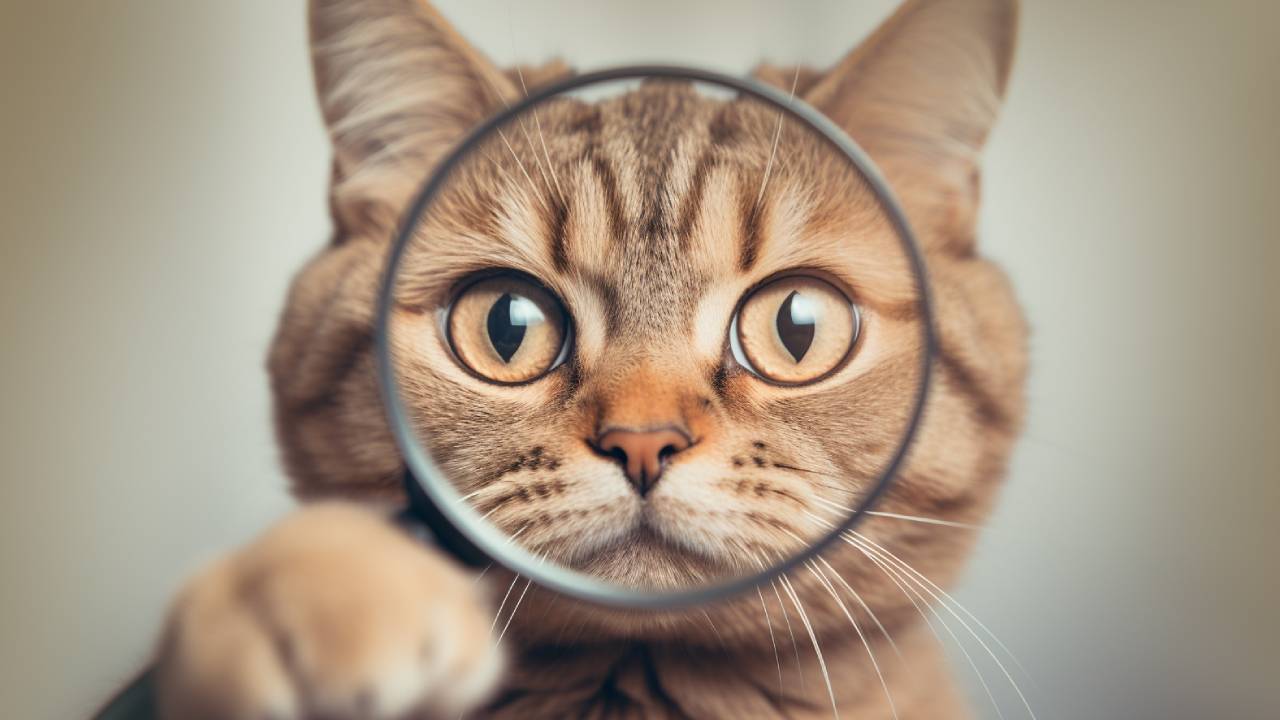Dive into the feline world and discover how cats see us and their surroundings. Cats possess a unique vision that allows them to navigate their environment precisely. Their perception of humans and the world is distinct and fascinating.
The Feline Perspective on Humans
Explore the secrets behind their captivating eyes and understand how these mysterious creatures view their world.
Do Cats See Us as Another Species?
While it’s clear that cats recognize humans as not fellow felines, they still engage in cat-specific behaviors when interacting with us.
For instance, cats may meow or purr exclusively at humans, a behavior they rarely show towards other cats. This unique form of communication indicates that while they acknowledge our differences, they also have developed special ways of interacting with us, blending their instinctive behaviors with learned responses to human actions.
Cats as Observers of Human Emotion: Cats may not be as skilled as dogs in reading human facial expressions, but they are surprisingly attuned to our emotional states. They can detect subtle changes in our body language, tone of voice, and daily routines. For example, a cat might snuggle up to a distressed owner, providing comfort, or they may keep their distance when sensing agitation. This emotional sensitivity showcases their deeper connection with humans, contrary to the belief that cats are emotionally detached.
Recognition and Attachment
It’s important to note that while cats may not rely primarily on visual recognition, they use a blend of senses, including scent and sound, to identify people. Cats often form profound attachments to their owners, viewing them as safety, comfort, and nutrition sources. These attachments are evident in how cats greet their owners after a period of absence, often through vocalizations, purring, and rubbing against them, demonstrating their recognition and affection.
Color Perception in Cats: Cats experience the world in colors differently from humans. They have a limited color spectrum, seeing blues and yellows more vividly while struggling with reds and greens. This muted color perception is due to the lower number of cone cells responsible for color detection in their eyes. Understanding this aspect of their vision helps explain certain behaviors, such as their lack of interest in colorful toys that do not fall within their color perception range.
Sensitivity to Movement and Light: Cats are exceptional at detecting movement, an ability that stems from the high density of rod cells in their eyes. These cells are sensitive to light and movement, making cats particularly adept at hunting in low-light conditions, such as dawn and dusk. This evolutionary adaptation not only aids in their hunting prowess but also influences their play behavior, often involving quick and sudden movements.
Field of Vision: Cats have a wider field of vision than humans, approximately 200 degrees compared to the human 180 degrees. This broad field of vision enhances their spatial awareness and is crucial for their survival, aiding in hunting and avoiding predators. This panoramic view allows them to monitor their environment better and react quickly to changes.
How Cats Interpret Human Body Language
Cats are adept at interpreting human body language and vocal cues. They are particularly responsive to the tone and pitch of our voices, with softer and higher-pitched tones being more appealing and comforting to them. This sensitivity can influence their behavior and how they respond to us, highlighting the importance of our tone and demeanor when interacting with them.
Common Misconceptions and Cat Behavior
Addressing misconceptions about cat behavior is crucial in understanding and fostering a positive relationship with our feline companions. The belief that cats are aloof and indifferent is often a misinterpretation of their independent nature. Cats may not constantly seek attention or affection, but this does not imply a lack of affection for their owners. Instead, it reflects their self-sufficient and reserved nature.

The ‘Bigger Cat’ Theory and Recognizing Human Faces
Some people believe that cats view humans as larger cats. While this simplification has some basis, it’s more accurate to say that cats recognize the difference but may exhibit similar behaviors towards humans as they do with other cats, such as grooming or cuddling. Additionally, contrary to popular belief, cats can differentiate between human faces. They may not use facial recognition as their primary means of identification. Still, they can tell one human from another, often relying more on other cues like scent and voice.
Conclusion
Understanding how cats see us enhances our bond with these fascinating creatures. It allows us to appreciate their unique perspective better and respond to their needs and behaviors more effectively.
By recognizing and respecting their distinct view of the world, we can deepen our relationship with our feline friends, making our coexistence more harmonious and fulfilling.

FAQs
1. What do cats see humans as?
Cats perceive humans as a source of security and comfort. They recognize and respond to our emotions and gestures, understanding us as protectors and caregivers in their environment.
2. How do cats see humans in the dark?
Cats use their superior night vision to see shapes and movement in low-light conditions.
3. Do cats have better night vision than humans?
Yes, cats have significantly better night vision due to more rod cells and a specialized reflective layer in their eyes.
4. What is the field of vision of cats?
Most cats have a field of vision of approximately 200 degrees.
5. Can cats see things invisible to humans?
Cats may perceive specific ultraviolet light patterns and subtle movements beyond human perception.






once I came across a picture of how cats see people and it is not the most pleasant sight…
I’ve always wondered about cat vision! It’s fascinating how they perceive the world differently. Do cats’ eyesight changes as they age?